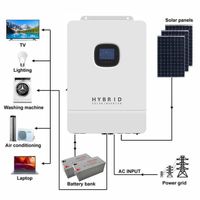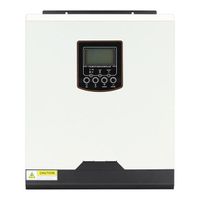Smart 3000 watt Pure Sine Wave Off-Grid Solar Charge Controller Electric Inverter 5kv 3kva 5kva Hybrid Solar Inverter 5kw 5.5kw
-
Supplier: Guangdong Xindun Power Technology Co., Ltd. -
Region: Guangdong, China -
Contact: Ms Cindy Lee -
Price: $198.00 / 1 - 59 pieces
$188.00 / 60 - 119 pieces
$172.00 / >=120 pieces -
Min. Order: 1 piece
Product details
| Package preview: | brand: | Hinton Solar | |
| Key words: | 5.5kw 5kva 3kva hybrid solar inverter 5.5kw 5kva 5 kw | Waveform: | Poole Sine Wave Output Solar Inverter |
| color: | White or customized color solar inverter | Supply capacity: | 10000 pieces per month |
| product name: | Pure Sine Wave Off Grid Electric Solar Charge Controller Inverter | Output current: | 60A~120A |
| size: | 400x315x101.5mm~440x342x101.5mm | Protect: | Short circuit/overload/overvoltage etc. |
| port: | Foshan, Guangzhou, Shenzhen | output type: | Single Phase Solar Inverter |
| payment terms: | L/C, Western Union, D/P, D/A, T/T, MoneyGram | Packaging Details: | Use a carton or wooden box to protect the hybrid solar inverter during transportation. |
| application: | Hybrid solar inverter for fan, pump, light, solar inverter system | type: | DC/AC Solar Inverter |
| Input voltage: | 24VDC 48VDC | The output voltage: | 220V±2% / 230V±2% / 240V±2% |
| Origin: | Guangdong, China | Output frequency: | 50Hz/60Hz |
| Warranty: | 12 months | Certificate: | EU Directive |
| Battery Type: | Lead-acid battery\Li-ion battery\Gel battery | weight: | 8.5kg~10kg |
| Inverter Efficiency: | 99% | exhibit: | LCD+LED Display Solar Inverter |
| model: | XD-HP Pro Hybrid Solar Inverter | strength: | 3kva 5kva 3000 watts 5kv 5kw 5.5kw |
| Controller type: | MPPT solar controller inverter |
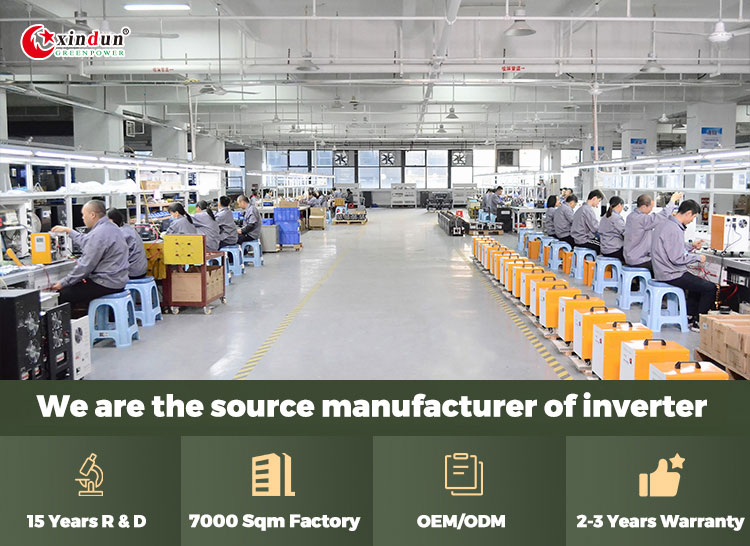
feature
1. High frequency design, high power density, small size, high efficiency, low no-load loss. 2. Built-in MPPT or PWM solar charge controller is optional. 3. Pure sine wave output, suitable for various loads. 4. The battery charge and discharge voltage parameters are adjustable, suitable for different types of batteries, which can prolong battery life and improve system performance. 5. The charging current can be set, and the battery capacity configuration is more flexible. 6. Three working modes are adjustable: AC priority, battery priority, PV priority. 7. The output voltage/frequency can be adjusted to adapt to different power grid environments. 8. Ultra-wide voltage and frequency input range, supporting mains or generator. 9. LED+LCD display, easy to operate and view data, and can directly set various functions and data. 10. Multiple protection functions (overload, overtemperature, short circuit protection, etc.). 11. RS485 communication port/APP is optional.
emphasize
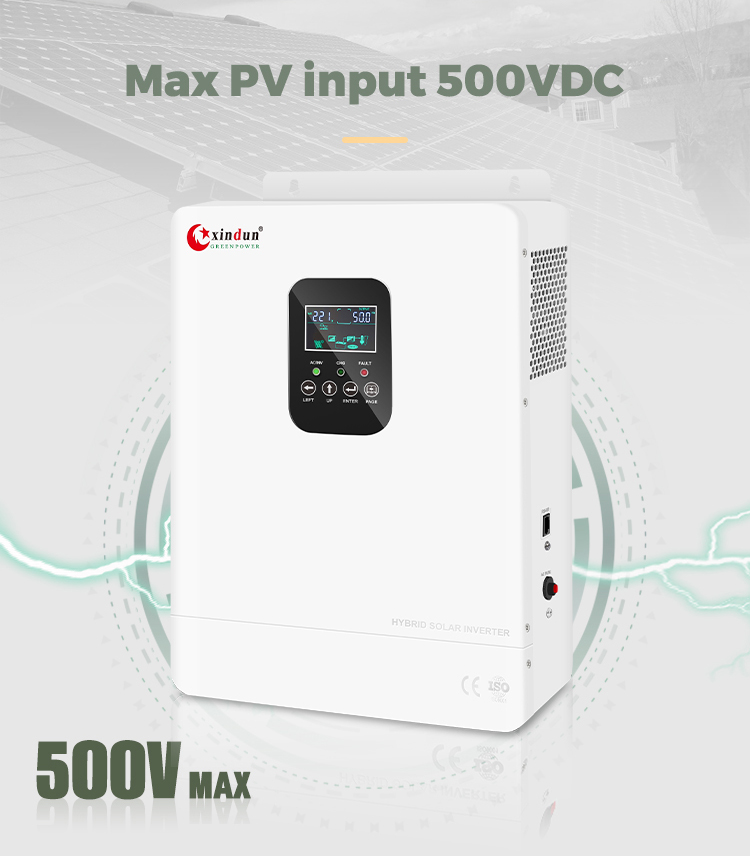
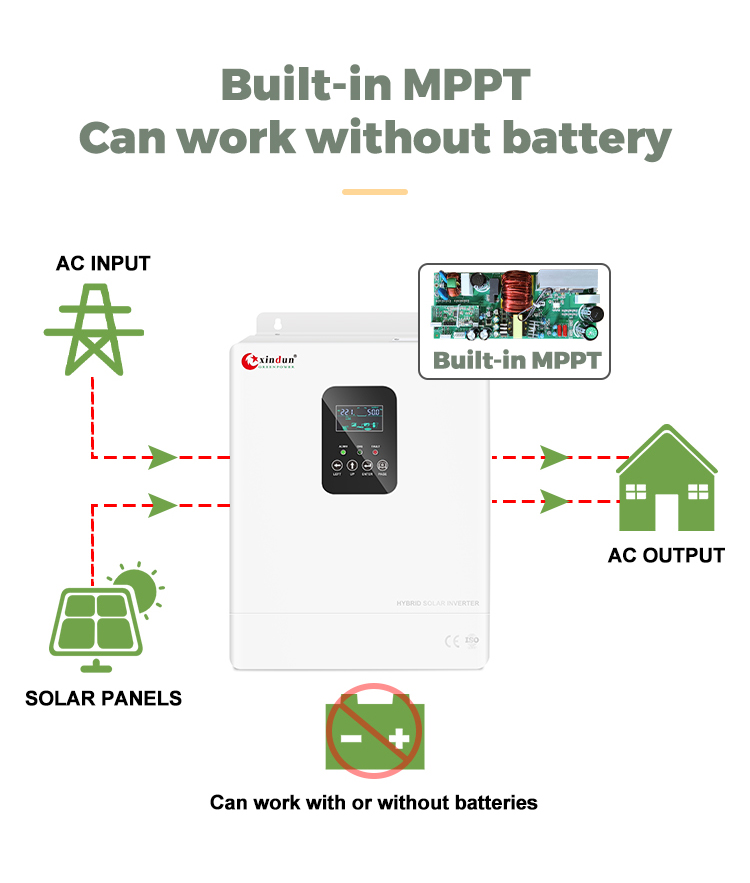
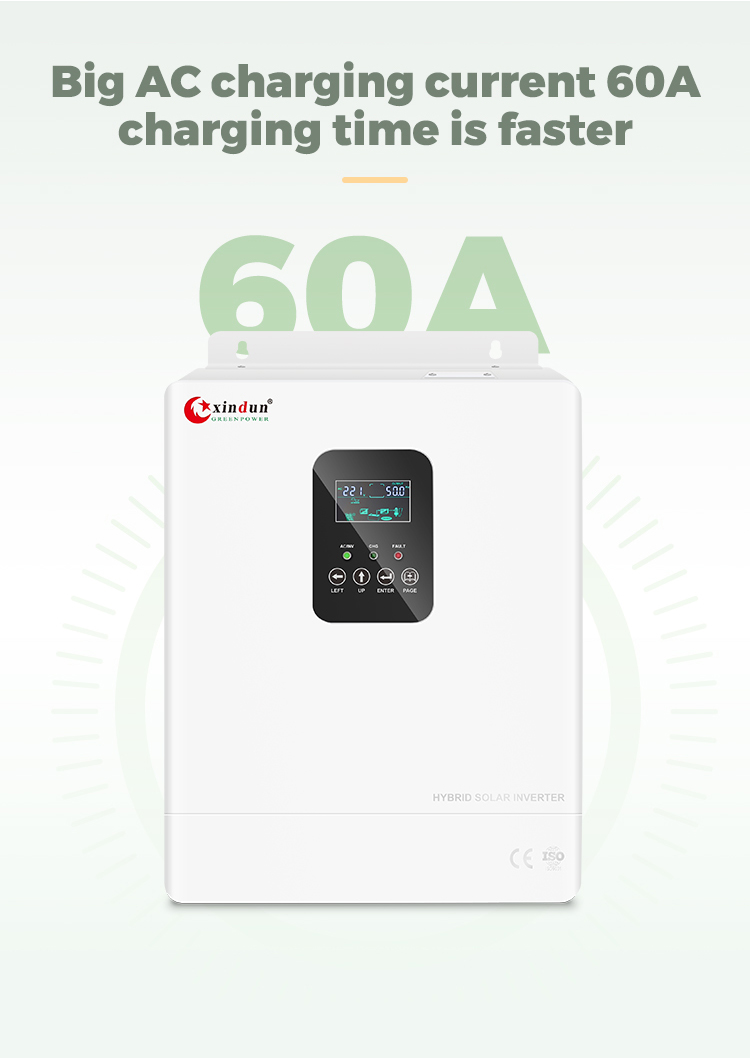
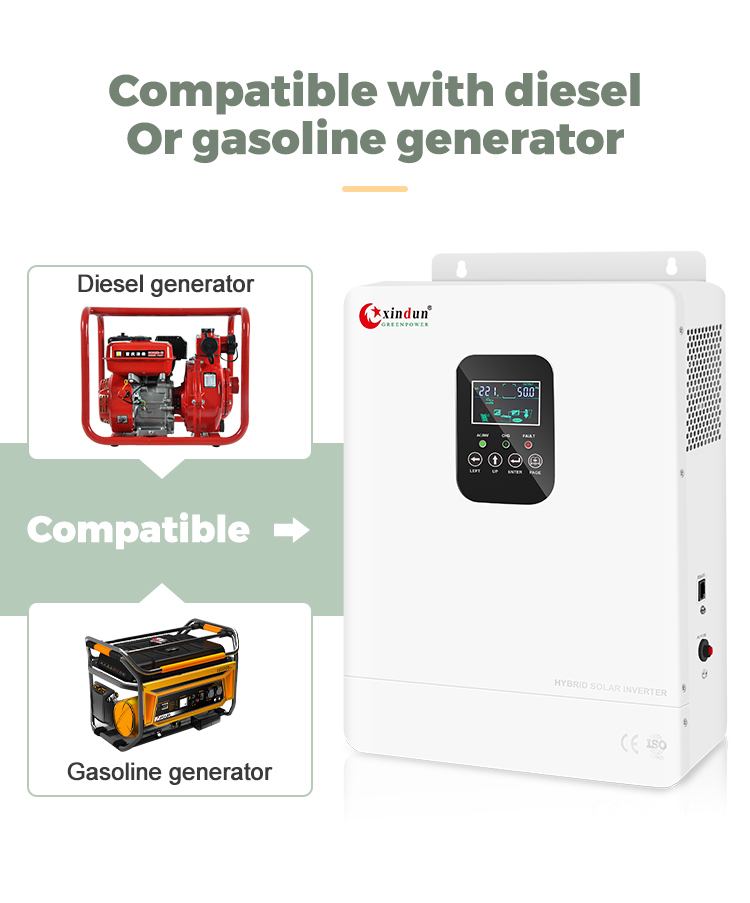

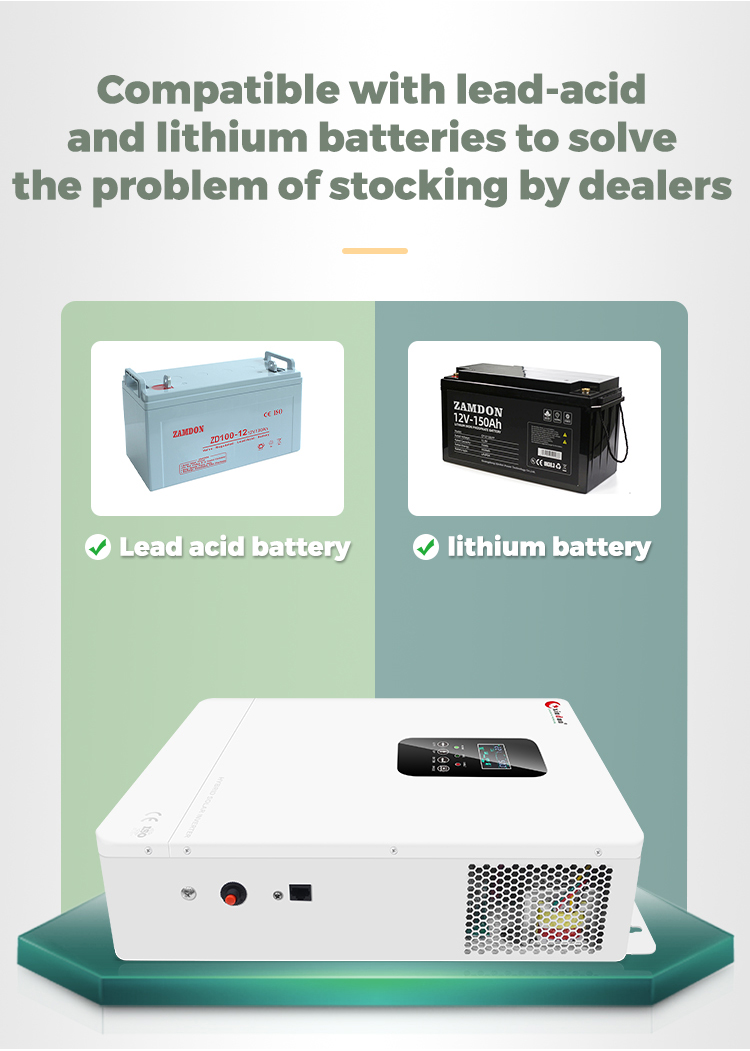
product information

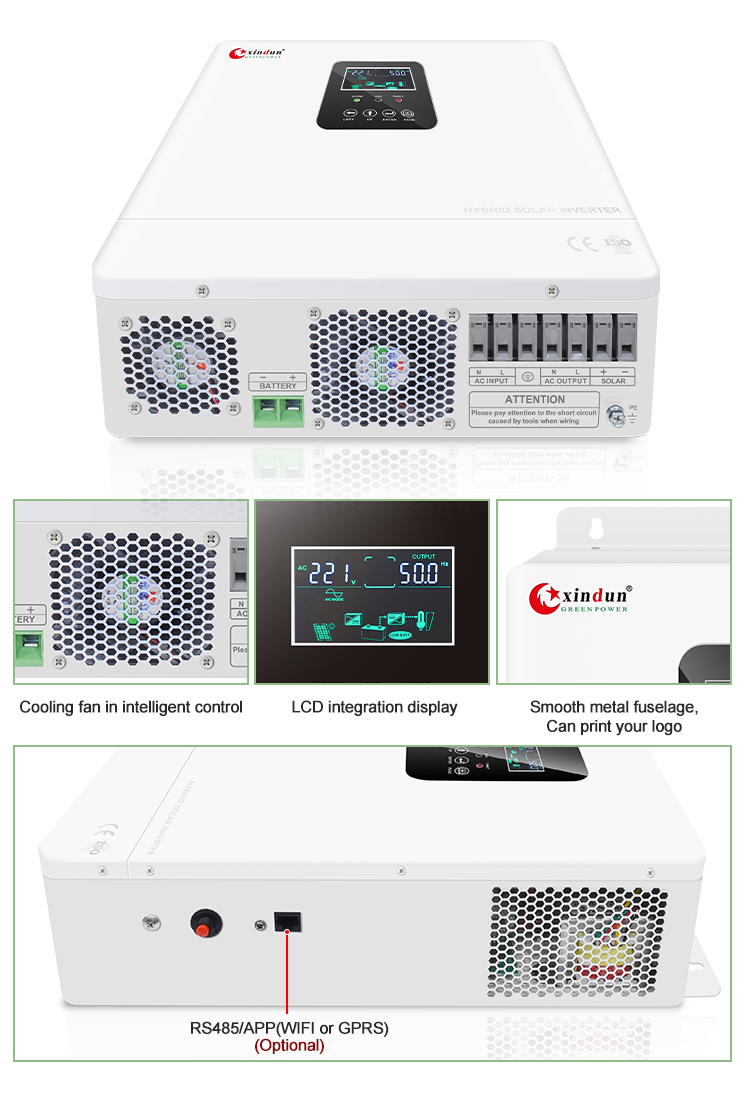
Specification
Specification | ||||||||||||
Model: HP pro-T | 32224L | 32224 | 50248L | 50248 | ||||||||
rated power | 3200W | 3200W | 5000W | 5000W | ||||||||
Peak power (20ms) | 9.6KVA | 9.6KVA | 15KVA | 15KVA | ||||||||
battery voltage | 24V DC | 24V DC | 48VDC | |||||||||
Product size (L*W*Hmm) | 400x315x101.5 | 440x342x101.5 | ||||||||||
Packing size (L*W*Hmm) | 488x393x198 | 528x420x198 | ||||||||||
Net weight (kg) | 8.5 | 10 | ||||||||||
Gross weight (kg) | 9.5 | 11 | ||||||||||
installation method | Wall-mounted | |||||||||||
PV | charging method | MPPT | ||||||||||
MPPT tracking voltage range | 30V-100VDC | 120V-450VDC | 60V-140VDC | 120V-450VDC | ||||||||
PV array rated (recommended) working voltage | 30V-60VDC | 360VDC | 60V-90VDC | 360VDC | ||||||||
Maximum photovoltaic input voltage Voc (at lowest temperature) | 120VDC | 500VDC | 180VDC | 500VDC | ||||||||
Photovoltaic array maximum power | 1680W | 4000W | 3360W | 6000W | ||||||||
MPPT tracking channel (input channel) | 1 | |||||||||||
enter | DC input voltage range | 21VDC-30VDC | 42VDC-60VDC | |||||||||
Rated AC input voltage | 220VAC / 230VAC / 240VAC | |||||||||||
AC input voltage range | 170VAC~280VAC (UPS mode) / 120VAC~280VAC (INV mode) | |||||||||||
AC input frequency range | 45Hz~55Hz (50Hz), 55Hz~65Hz (60Hz) | |||||||||||
output | Output Efficiency (Battery/PV Mode) | 94% (peak) | ||||||||||
Output Voltage (Battery/PV Mode) | 220VAC±2% / 230VAC±2% / 240VAC±2% | |||||||||||
Output frequency (battery/photovoltaic mode) | 50Hz±0.5 or 60Hz±0.5 | |||||||||||
Output Waveform (Battery/PV Mode) | pure sine wave | |||||||||||
Efficiency (AC Mode) | >99% | |||||||||||
Output Voltage (AC Mode) | follow input | |||||||||||
Output frequency (AC mode) | follow input | |||||||||||
Output waveform distortion battery/photovoltaic mode) | ≤3% (linear load) | |||||||||||
No load loss (battery mode) | ≤1% rated power | |||||||||||
No-load loss (AC mode) | ≤0.5% rated power (charger does not work in AC mode) | |||||||||||
Battery | Battery type | VRLA battery | Charging voltage: 13.8V; floating charging voltage: 13.7V (single battery voltage) | |||||||||
custom battery | The charging and discharging parameters of different types of batteries can be customized according to user requirements (The charging and discharging parameters of different types of batteries can be set through the operation panel) | |||||||||||
Maximum charging current (mains + PV) | 120A | 100A | 120A | 100A | ||||||||
Maximum Photovoltaic Charging Current | 60A | 100A | 60A | 100A | ||||||||
Maximum AC charging current | 60A | 60A | 60A | 60A | ||||||||
charging method | Three-stage (constant current, constant voltage, float charge) | |||||||||||
Protect | Low battery voltage alarm | Battery undervoltage protection value +0.5V (single battery voltage) | ||||||||||
Battery low voltage protection | Factory default: 10.5V (single battery voltage) | |||||||||||
Battery overvoltage alarm | Constant charging voltage +0.8V (single battery voltage) | |||||||||||
Battery Overvoltage Protection | Factory default: 17V (single battery voltage) | |||||||||||
Battery Overvoltage Recovery Voltage | Battery overvoltage protection value -1V (single battery voltage) | |||||||||||
Overload Power Protection | Automatic protection (battery mode), circuit breaker or fuse (AC mode) | |||||||||||
Inverter output short circuit protection | Automatic protection (battery mode), circuit breaker or fuse (AC mode) | |||||||||||
temperature protection | >90°C (off output) | |||||||||||
Operating mode | Mains priority/photovoltaic priority/battery priority (configurable) | |||||||||||
connecting time | ≤10ms | |||||||||||
exhibit | LCD+LED | |||||||||||
thermal method | Intelligent control cooling fan | |||||||||||
Communication (optional) | RS485/APP (WIFI monitoring or GPRS monitoring) | |||||||||||
environment | Operating temperature | -10℃~40℃ | ||||||||||
Storage temperature | -15℃~60℃ | |||||||||||
noise | ≤55dB | |||||||||||
altitude | 2000m (greater than derating) | |||||||||||
humidity | 0%~95% (no condensation) | |||||||||||
wiring diagram
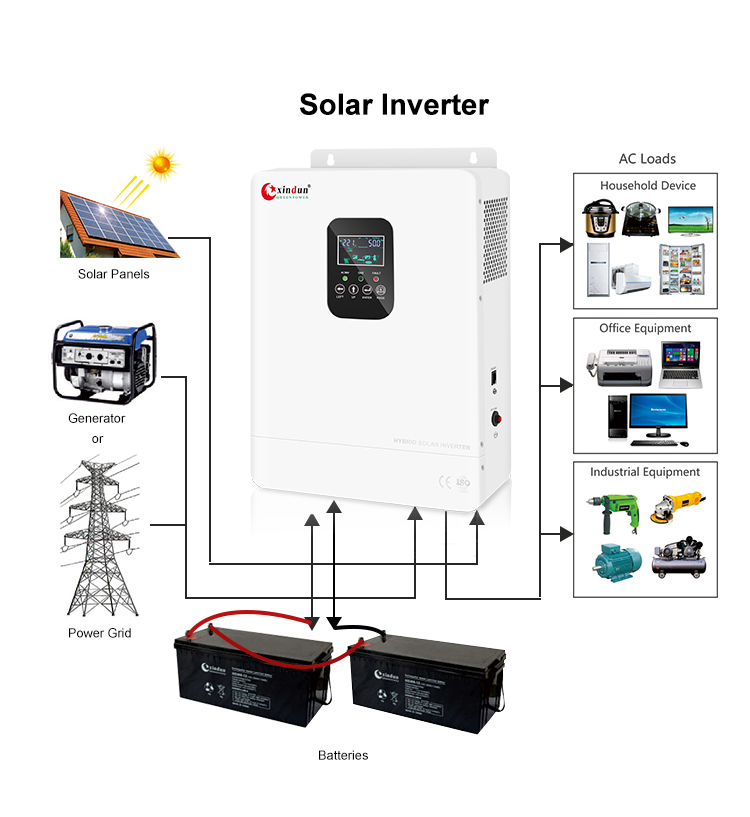
1. We provide three optional working modes (transmission time ≤ 4ms):
1) AC priority mode (d0)
. When the mains is normal, on the one hand, the mains charges the battery; on the other hand, only the mains supplies power to the load; . When the mains is abnormal, the inverter will switch to battery mode, and the battery will supply power to the load.
2) Photovoltaic priority mode (d1)
. When the solar energy is normal, if the solar power is greater than the load power, the load is completely powered by the solar energy. When the solar power is less than the load power, the insufficient part is supplemented by the battery, and the solar energy and the battery jointly supply power to the load. If the battery has a low voltage due to load, the inverter will switch to AC mode to supply power, and the solar energy will only charge the battery;
. When the solar energy is abnormal, the inverter will directly switch to the AC mode to supply power, and the mains will charge the battery.
3) Battery priority mode (d2)
. When the inverter has no battery low-voltage alarm, even if the mains input is normal, the inverter will switch to battery mode, and the battery will supply power to the load. . When the battery is at low voltage (that is, the voltage of a regular single battery is 11vdc) and the mains input is normal, the inverter will switch to AC mode, the mains will fully power the load, and the solar will charge the battery, but the mains The battery will not be charged.
1) AC priority mode (d0)
. When the mains is normal, on the one hand, the mains charges the battery; on the other hand, only the mains supplies power to the load; . When the mains is abnormal, the inverter will switch to battery mode, and the battery will supply power to the load.
2) Photovoltaic priority mode (d1)
. When the solar energy is normal, if the solar power is greater than the load power, the load is completely powered by the solar energy. When the solar power is less than the load power, the insufficient part is supplemented by the battery, and the solar energy and the battery jointly supply power to the load. If the battery has a low voltage due to load, the inverter will switch to AC mode to supply power, and the solar energy will only charge the battery;
. When the solar energy is abnormal, the inverter will directly switch to the AC mode to supply power, and the mains will charge the battery.
3) Battery priority mode (d2)
. When the inverter has no battery low-voltage alarm, even if the mains input is normal, the inverter will switch to battery mode, and the battery will supply power to the load. . When the battery is at low voltage (that is, the voltage of a regular single battery is 11vdc) and the mains input is normal, the inverter will switch to AC mode, the mains will fully power the load, and the solar will charge the battery, but the mains The battery will not be charged.
application
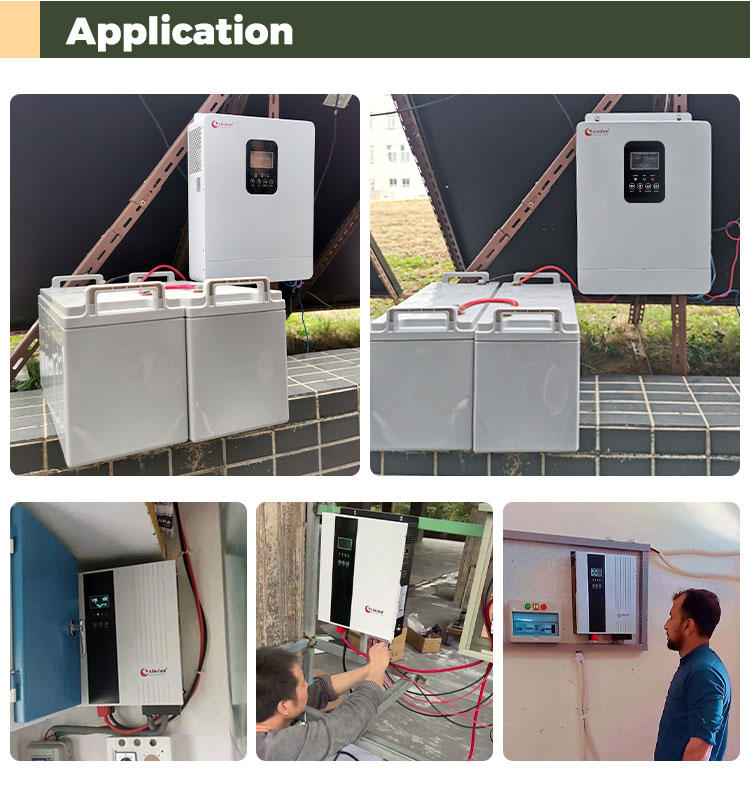
VIEW MORE
You may like
-
Smart solar inverter 10kw Huawei hybrid 3 phase Huawei sun2000-10ktl-m1 smart photovoltaic controller 5kw 6kw 10kw 12kw grid-connected inverter

-
Hybrid Solar Inverter 3.5 KW 5.5 KW Sine Wave Photovoltaic Inverter with MPPT Controller

-
Whc high efficiency DC to AC 5.5kw pure sine solar inverter, hybrid solar inverter, hybrid inverter with mppt

-
200w 500w solar inverter dc ac 220-240v solar inverter off grid system dc 12v 240v solar system off grid inverter

-
Inverter Pure Wave Sine 12V/24V To AC110V 220V 1000W 2000W 3000W Voltage Transformer Power Converter Solar Inverter LED Display

-
5kw 8kw 10kw On Grid Hybrid Solar Inverter Off Grid Solar Inverter Split Phase Inverter With Mppt Solar Charge Controller

-
1KW 3KW 5KW 24V 48V Charging Inverter and Converter UPS All in One Off Grid Solar Inverter

-
Hybrid Solar Inverter 3KVA 5KVA 24V/48V Pure Sine Wave Grid Power for MPPT Solar Inverter Solar System

-
1500Va 2000Va 2400Va 3200Va Off Grid Inverter Mppt Charge Controller Pure Sine Wave Inverter for Home Solar Power

-
6KW 6000W 8KVA 8000VA Low Frequency Off Grid Hybrid Solar Inverter for Solar System

Other Products
-
 $150.00 - $170.00 / piece
$150.00 - $170.00 / piece -
 $25.00 / set
$25.00 / set
Related Search
dc 12v ac 220v pure sine wave inverter 500w suppliers
pure sine wave home ups battery
220v pure sine wave ups
pure sine wave inverter pcb
110 inverter pure sine wave
inverter pure sine wave 12v
500w pure sine wave inverter
24v pure sine wave inverter charger
pure sine wave 8000w
24v pure sine wave invert charger suppliers







